Span 45.5 cm / 18 in
Weight 45 g / 1.59 oz ready to fly
The concept:
- Funny stubby design
- high-wing monoplane
- good flight characteristics
- few parts
- easy to build
- two versions, one rubber powered the other RPU 20 (here)
Name not only sounds Spanish, it is and means in English: It costs less than you think.

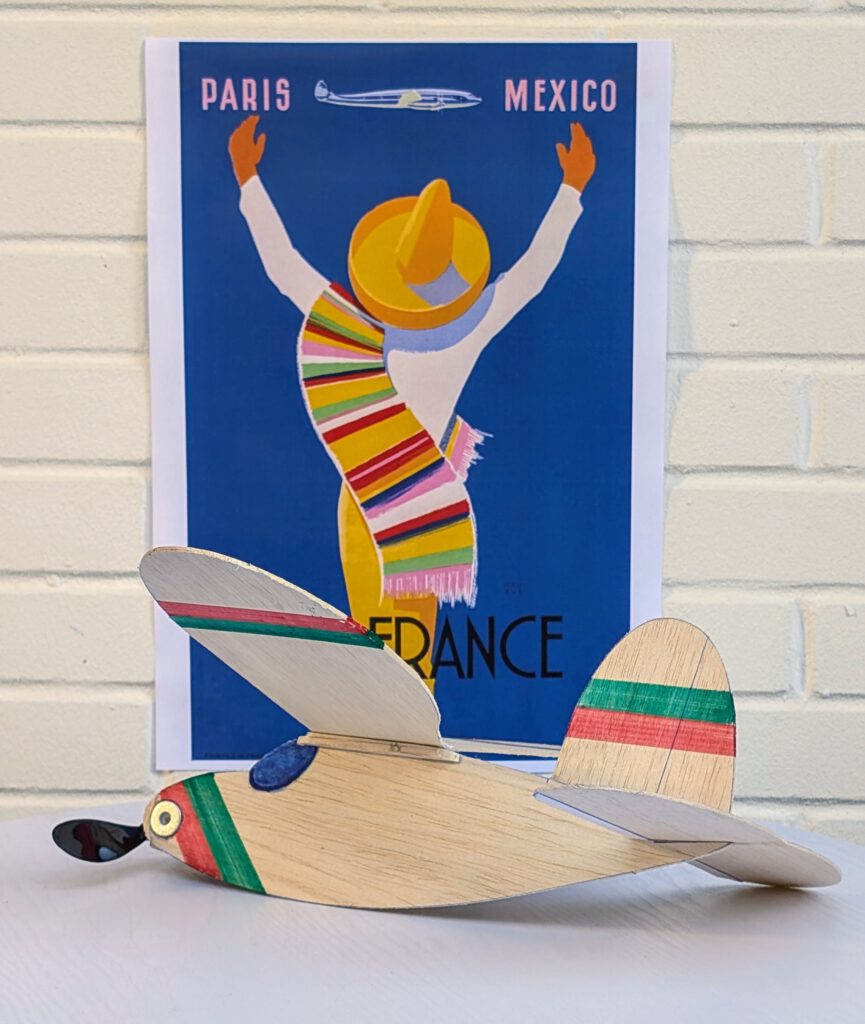


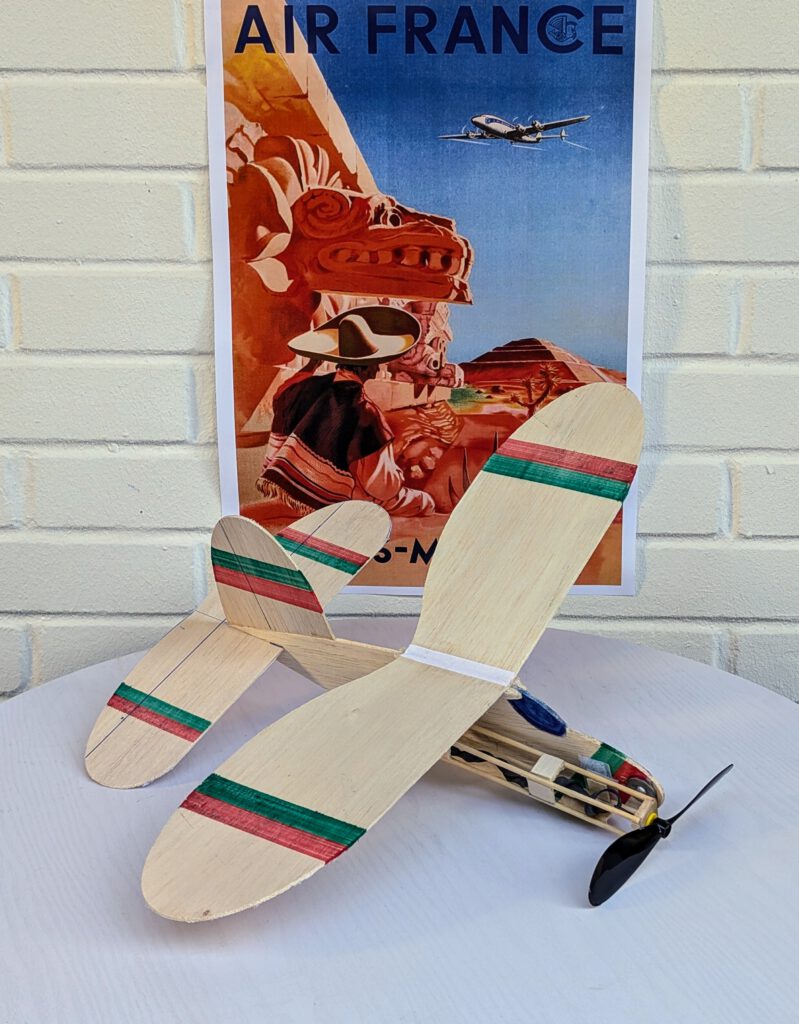
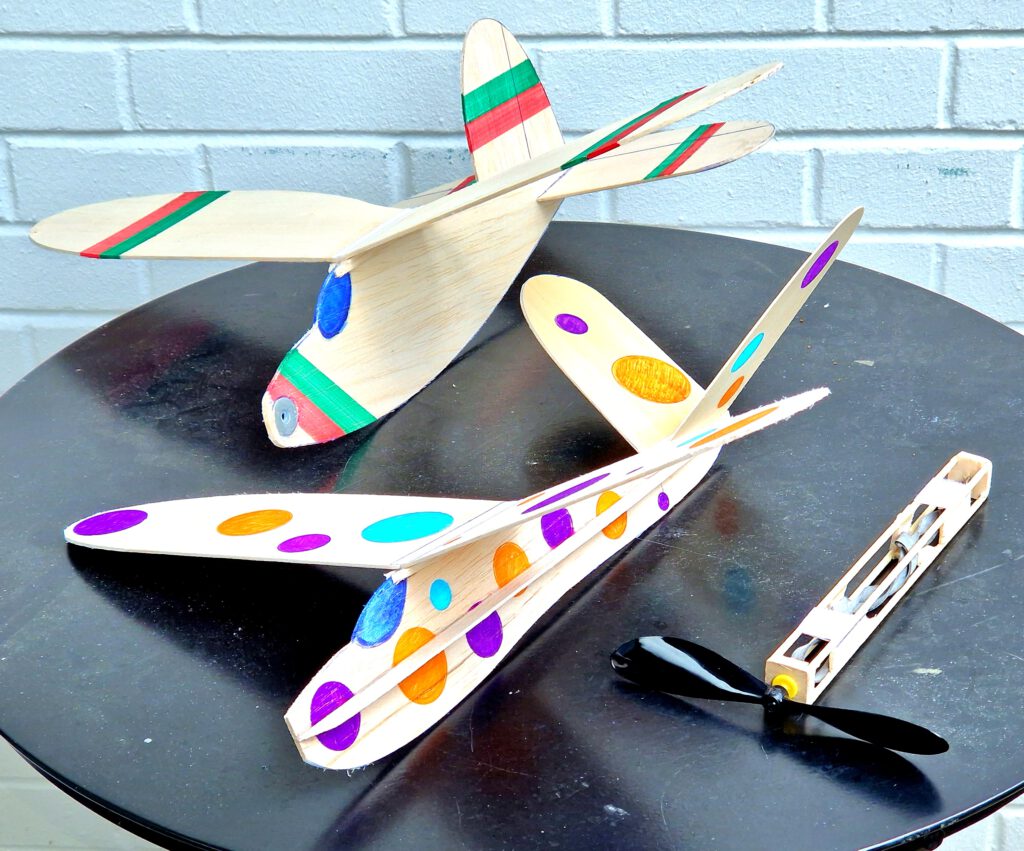
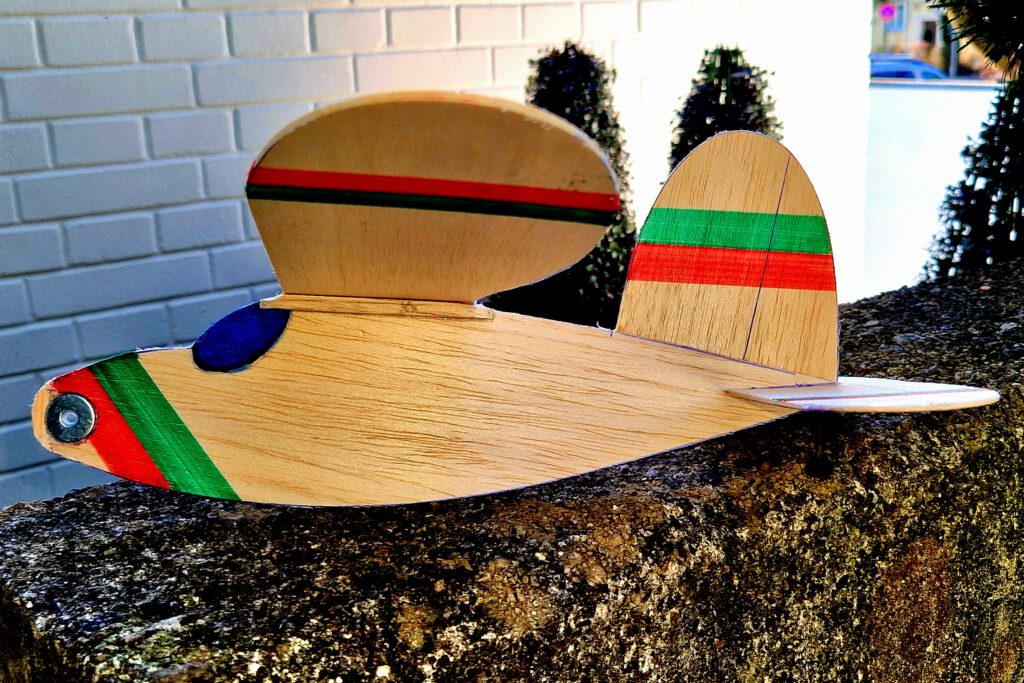
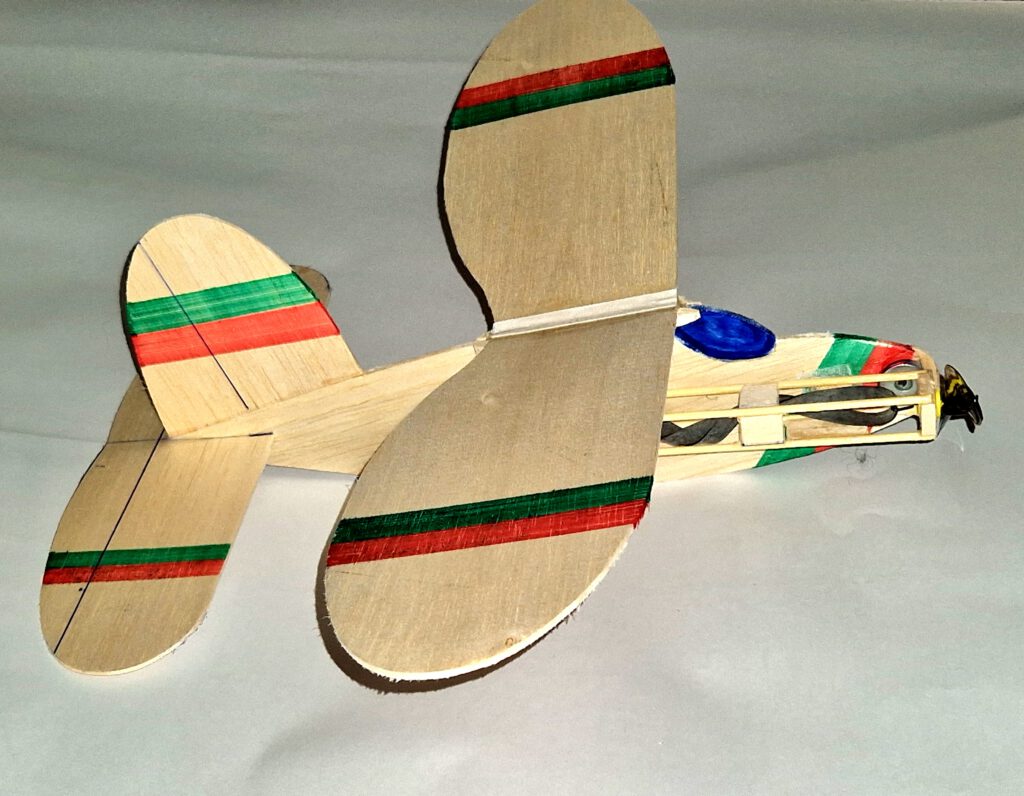
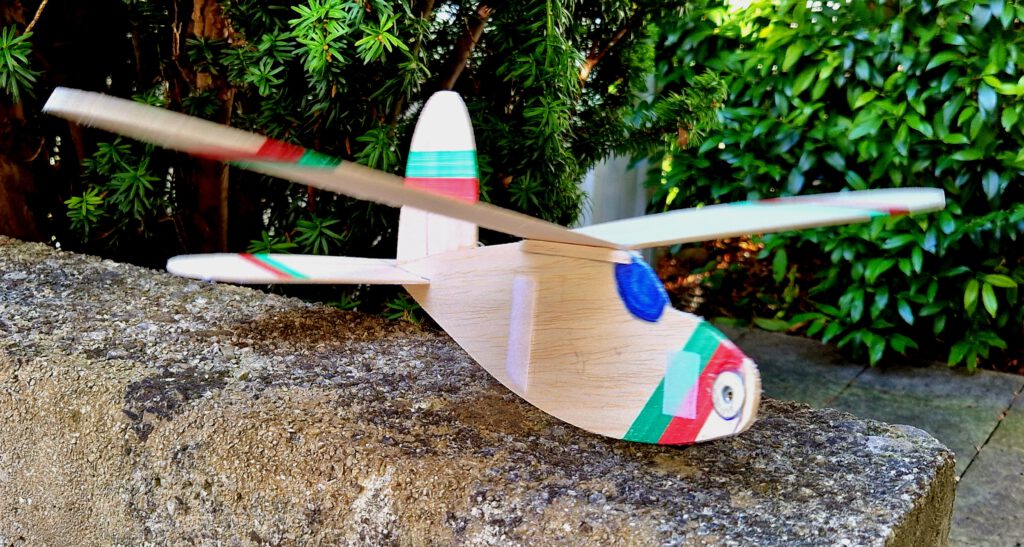
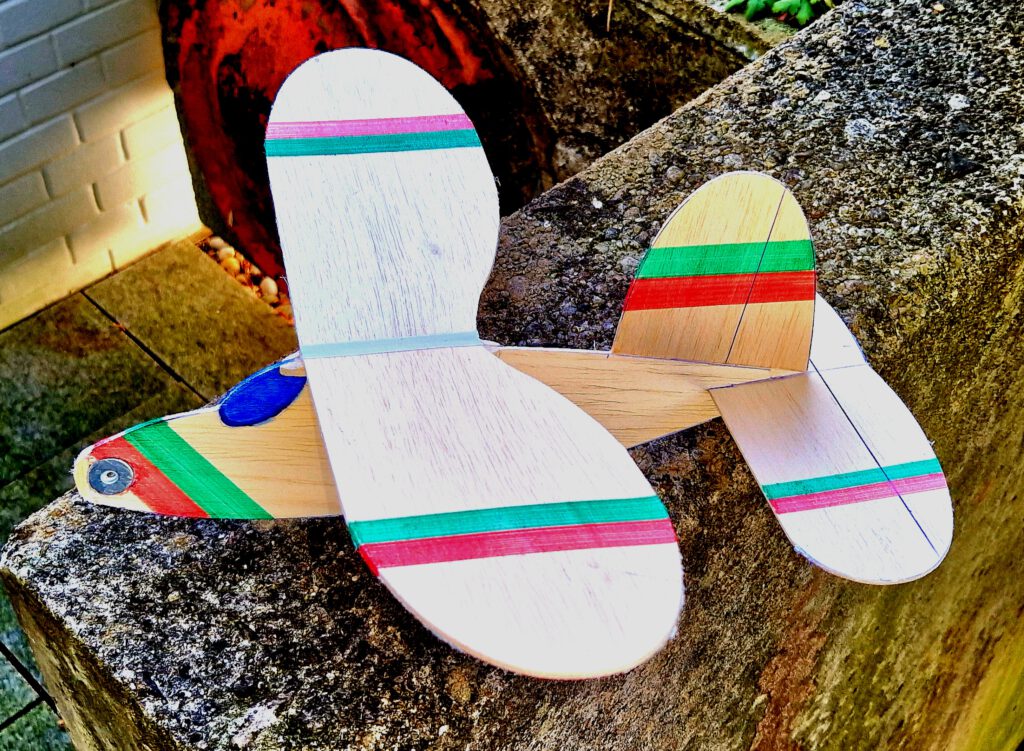
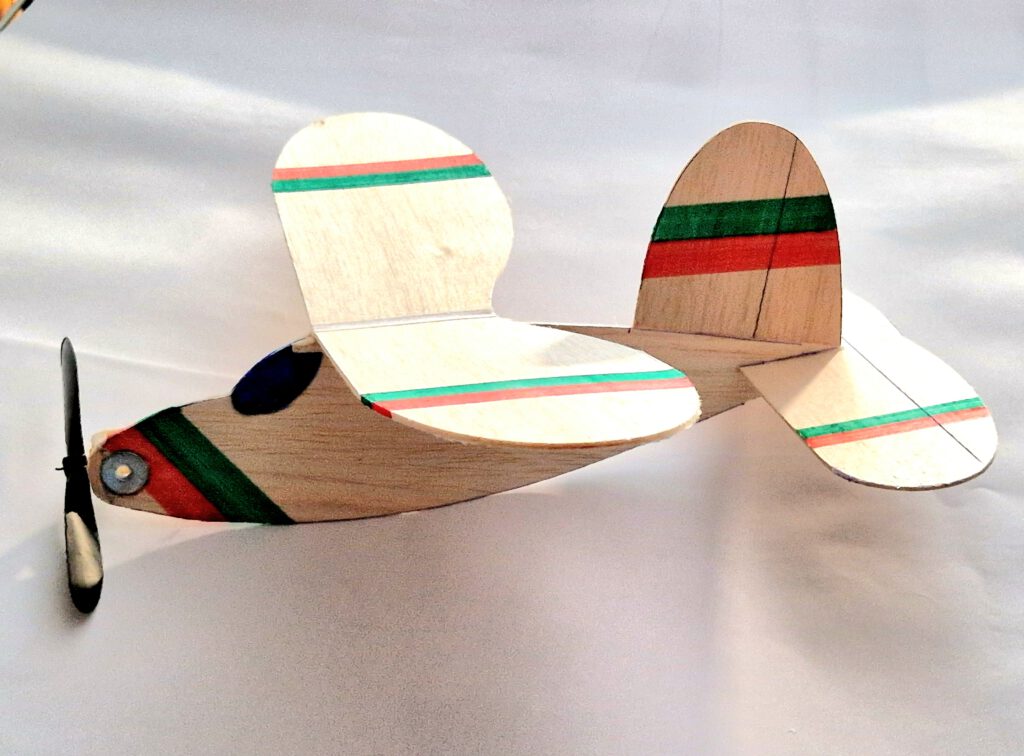
What is RPU?
RPU stands for rubber power unit.
This is a device designed for the modelbuilder who likes to fly many models with one only powerunit. Main material of the RPU comes from the grocery store around the corner: four barbecue skewer chopsticks. Add to them scratch balsa, a hook made from piano wire, some black rubber and a commercial plastic airscrew. That’s all.
The unit is attachable through two pieces of Velcro tape and can thus be used for example first on a little Spitfire five minutes later on a Mitsubishi Zero and ten minutes later on a Macchi Folgore of the same configuration. You build only one RPU and use it on as many modelplanes as you wish.
Models with RPU use the same asymmetrical principle as is known from No-cal models. From the one side they look handsome as from the other the power unit disturbs the harmonic view considerably.
Generally there is no great difference between the flight performances of a balsa sheet profile model with built-in rubber motor and a model flying on a RPU.
Why not try both principles? Among the plans range of beginner.zone you will find models of both categories. Sit down, build, fly, compare!
I developed and tested three different types of RPUs.
- The one for small models of 30 cm / 11.8 in to 40 cm / 15.75 in wingspan is the RPU 20 (lenghth 20 cm / 7.9 in).
- The one for medium sized models with a span of 40 cm / 15.75 in to 60 cm / 23.6 in is the RPU 30 (length 30 cm / 11.8 in).
- The one for larger models of up to 80 cm / 31.5 in wingspan is the RPU 40 (length 40 cm / 15.75 in).
- The RPU 40 is made from slightly different material. Instead of the skewer chopsticks it uses two strips of bamboo wooden sticks (400 x 9 x 3 mm). The rest is identical.
Building the balsa sheet model Cuesta menos de lo que crees RPU:
Materials:
Fuselage: B 2; wing: B 1.5; wing support: B strips 5 x 5; fin: B 1.5; horizontal stabilizer: B 1 or light B 1.5; linen band width 10 mm / ½ in; Velcro tape with adhesive backside; ballast: 2.5 g / 0.1 oz steel or lead.
Assembly:
Cut out balsa parts in accordance to plan (photo). Make slot for horizontal stabilizer into fuselage part. Sand well. Transfer outlines of cockpit, rudders, elevators etc. from paper to wood with pen. If coloring is desired do it now.
Fuselage:
Put fuselage part on a so called “third hand” and cement fin on it (photo). Use needles or clothespins. Visually check symmetry from all sides as both parts have to be 100 percent in line.
Cement wing support strip at given place on one side of the fuselage holding with needles or clamps or clothespins. Repeat procedure on the other side and let dry.
Wing:
Wing consists of a right and a left wing half. Fix left wing half on building board with needles. Underlay right wing half tip in accordance to required dihedral. Join both halves and cover wing center area with linen band (photo). Let dry. If wing has the tendency to rest only on one side then it is too heavy on this side. To compensate the imbalance disperse an amount of white wood glue on the opposite wing half’s tip area. Do it if necessary twice until balance is obtained.
Final Assembly:
Again put fuselage on earlier mentioned “third hand”. Cement wing on wing supports using needles to hold in place. Doublecheck visually symmetry. Let dry.
Put horizontal stabilizer into fuselage slot and cement. Again check symmetry! Let dry.
Stick two pieces of Velcro according to your RPU on right fuselage side.
For balancing your model properly install RPU and start testgliding over tall grass. Add ballast according to your test results. Note given position of CG on plan.
Remember correct center of gravity (CG) is essential for successful flights.
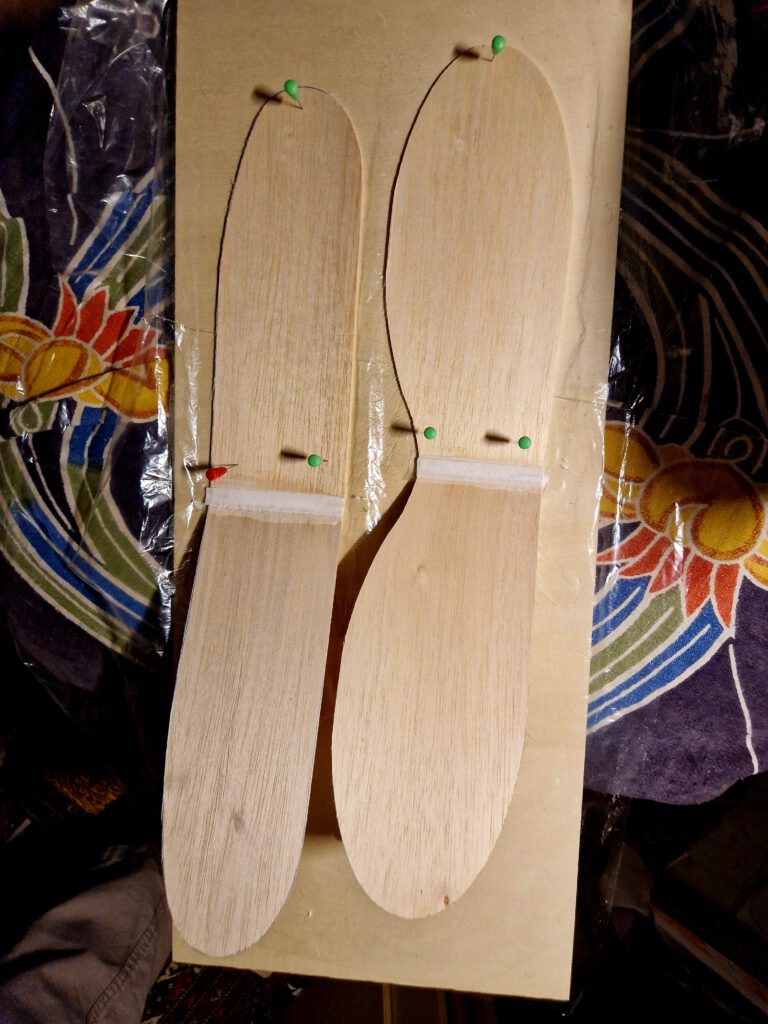
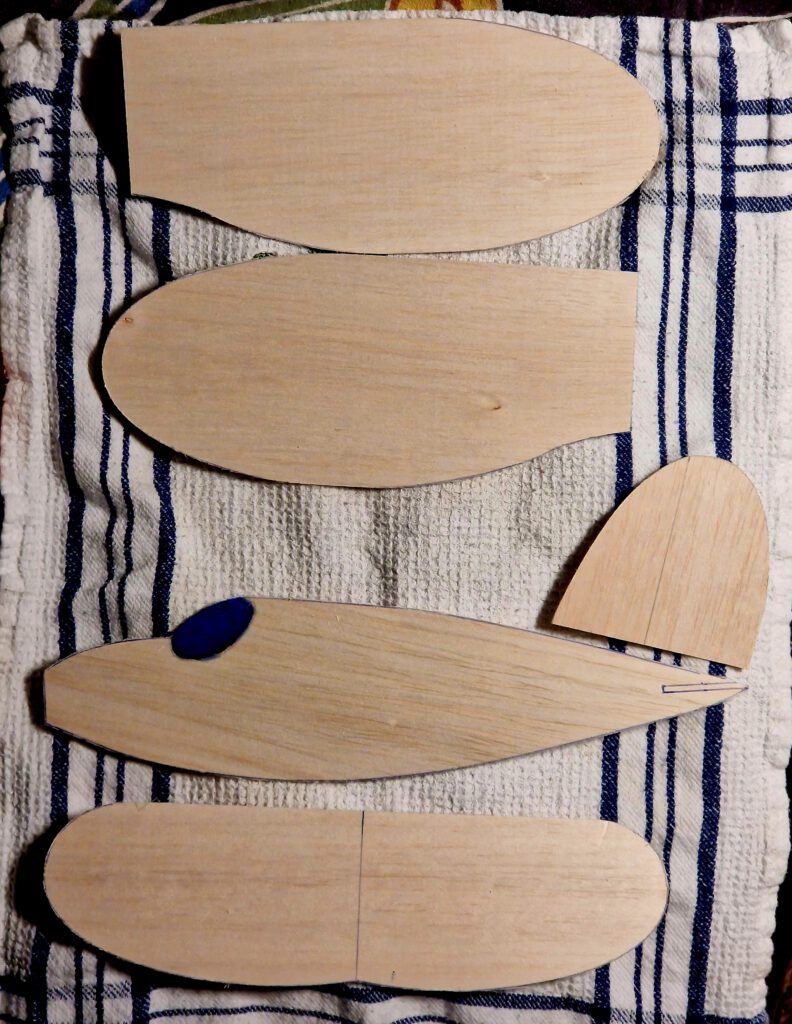
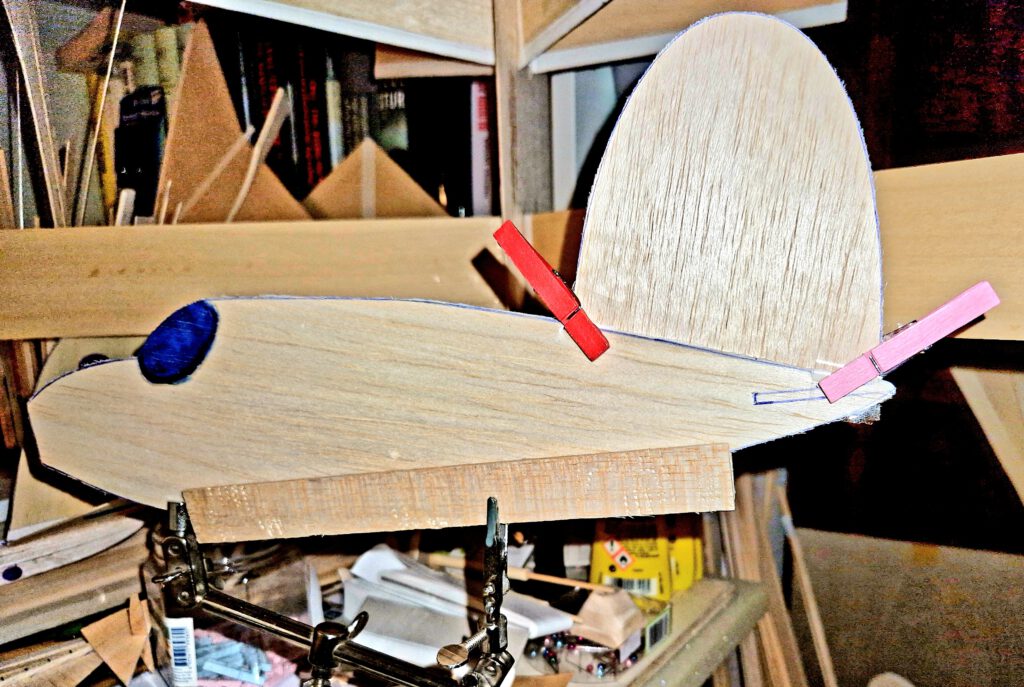
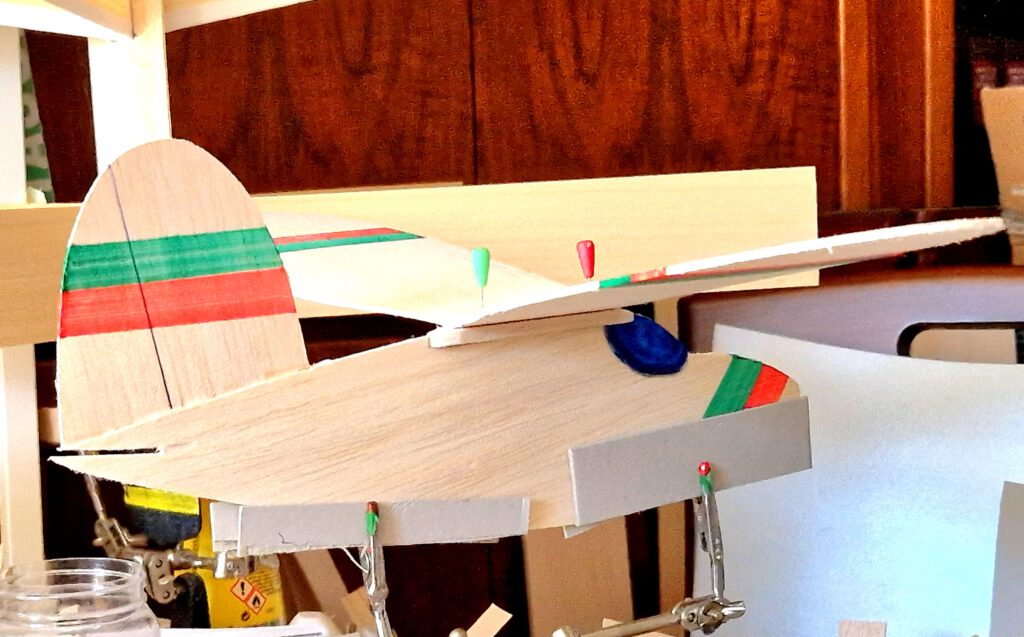
Izan hegaldi atsegin asko! (Wielu przyjemnych lotów!)


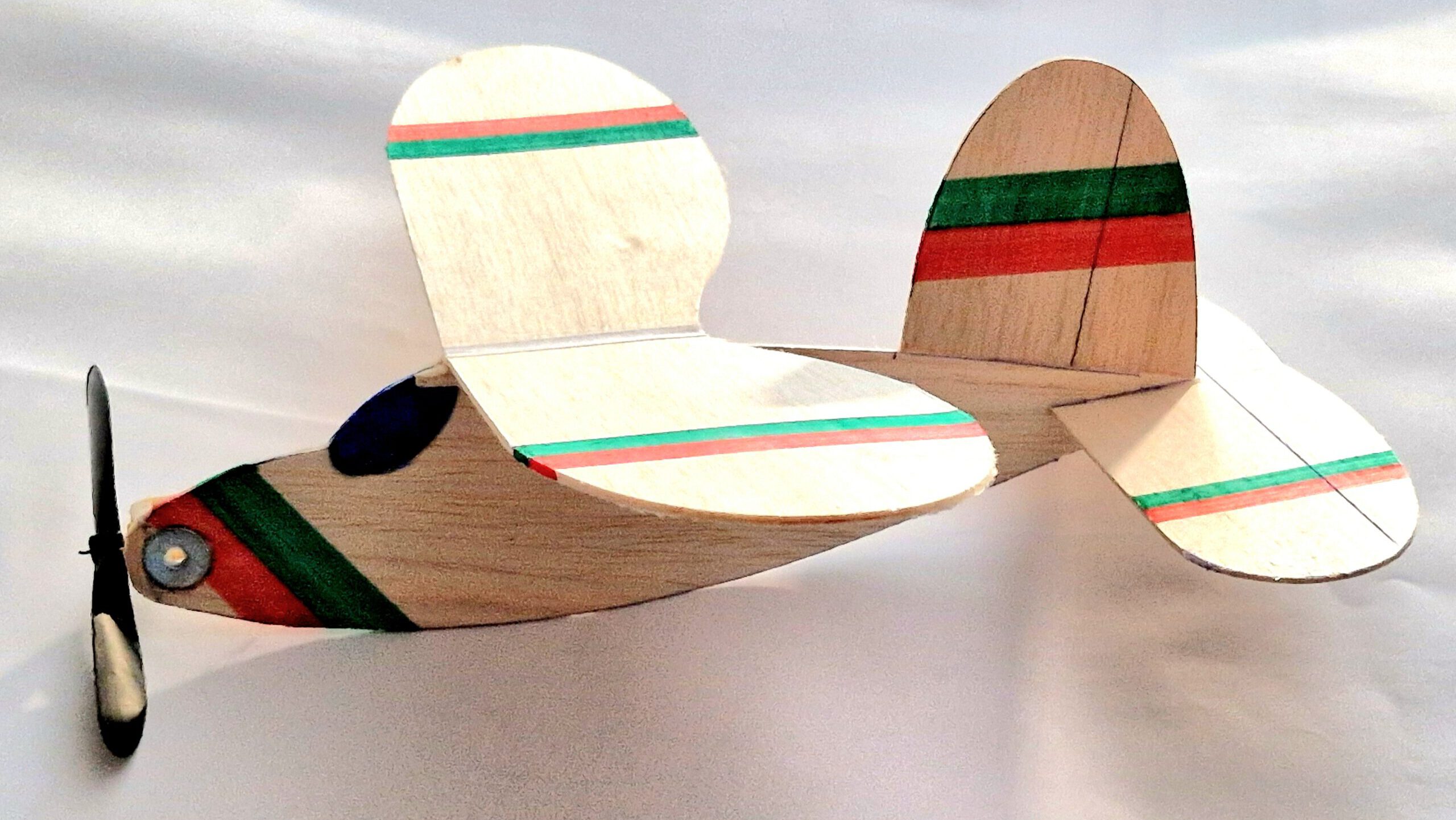
Leave a Reply